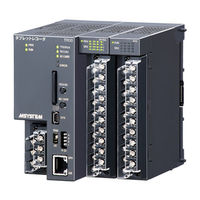M-system TR30-G Data Acquisition System Manuals
Manuals and User Guides for M-system TR30-G Data Acquisition System. We have 1 M-system TR30-G Data Acquisition System manual available for free PDF download: User Manual
M-system TR30-G User Manual (244 pages)
Paperless Recorder
Brand: M-system
|
Category: Measuring Instruments
|
Size: 32 MB
Table of Contents
Advertisement
